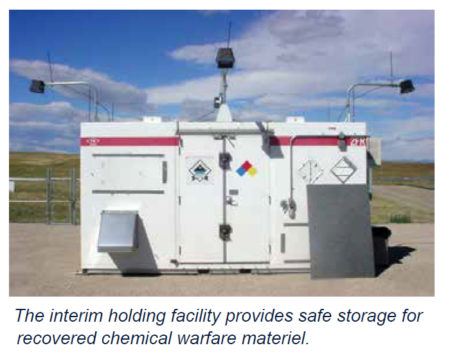
RCMD’s proven transportable assessment and treatment technologies quickly respond to planned and unplanned recovered chemical warfare materiel (RCWM) recoveries, which are most often in response to CWM recovered during range clearing operations and from relic burial sites. These recovered items require safe and secure storage until they can be destroyed. Interim holding facilities (IHF) provide safe, temporary storage for RCWM at sites where storage facilities, such as igloos and bunkers, are unavailable.
Engineers developed stringent construction and safety requirements for the IHF. Automatic fire suppression system and ports to conduct agent monitoring comply with federal law regulating hazardous waste management. The facilities consist of fireproof and corrosion-resistant materials. Light switches and fixtures, outlets and air conditioners must meet strict nonexplosive design requirements to reduce the risk of fire inside the IHF. Additionally, the IHF includes a secondary containment area below the floor that would contain liquids should a leak occur.
The IHF includes high security locks and remains enclosed in a fenced area. Lights attached to the IHF maximize lighting at night. Additionally, agent monitoring of the IHF is conducted until the recovered items are removed for treatment.

